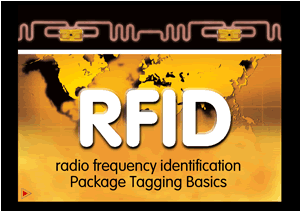What are the three most important issues surrounding RFID Technology? Location...Location...Location!

In retail, a store's location impacts sales performance more than any other factor. Quite often, great managers, great marketing programs, great price points, and even great products do not matter as much as a great location!
The quantifiable value of location is distinct. However, the ability to tap into location as a meaningful component of new business intelligence platforms or systems is a relatively new concept altogether.
Some estimates purport that 85 percent of all data used by businesses today, contains some type of location component. In other words, somewhere the data holds information that is tied to a geographic location.
Sometimes a location component is quite specific and spelled out...essentially "meta data." An example like an organization storing the latitude and longitude of its assets, customers and so forth in a database. Other times, the geographic meta data may be an address that can be pinpointed on a map, either manually or through a process called geocoding to determine longitude and latitude.
Location indicators can also be less obvious. IE; some companies can use the first six digits of a phone number that is, the area code and the three-digit prefix, to designate a record, to a specific place.
A natural fit for location meta data, which is easily accessible, is needed and required. By de-centralizing analytics and distributing decision-making tools to a large number of users, organizations work to break the bottleneck between inspiration and insight. The goal must be for systems users, and decision makers in every strategic unit of your organization, to have access to the data they need quickly, without the need to be experts in the use of legacy or distributed system based platforms.
Location awareness (intelligence) goes one step farther and provides an easy way for users to quickly analyze and visualize critical spatial relationships among data that, unless the user is a technical expert, would not be apparent.
In a hyper-competitive market (like retail) where every investment must generate a return, smart organizations realize that location turns out a fast, high-benefit reward. Early adopters of business intelligence software (supply chain visibility or demand planning) saw that, by publishing the data that defines their business across the organization, they could gain an advantage over the competition. Similarly, progressive users of this type of technology realize that, by revealing location within their core databases, they can positively alter the way they do business and never look back.
Obviously, the new technology currently taking hold in retail and manufacturing supply chains stands out as a great example of location meta data in action. Radio frequency identification (RFID) tags can solve critical problems related to supply chain management, store-level inventory, intuitive displays, homeland security, and other important processes. While the issue carries some controversy relative to privacy, industry standards and other issues, RFID also has great potential. Organizations as diverse as the Department of Homeland Security and Wal-Mart are deep into their pilot programs and have full-scale strategies to take advantage of RFID.
Hence, RFID is creating vast amounts of location meta data. For some who manage large volumes of data, the advent of this RFID technology creates the need to develop a whole new set of analyses. The process of creating data for tracking product shipments, inventory and even a customer's buying patterns begs for a powerful business intelligence tool. It must be powerful enough to allow analysts and operations managers to monitor and measure the status intuitively. Since every record in an RFID database also has a geographic component, the right business intelligence solution for the job should incorporate location meta data.
The fact that manufacturers and retailers desire to share data about inventory and supply, location intelligence gains even more importance. Using a location-enabled platform, retailers will allow suppliers to view and query reports describing the movement of product through warehouses and outlet centers. The supplier may require access, or need to view a map that breaks out the volume of shipments of a product by location. The map would show the location of warehouses and inventory in those warehouses, as well as outlets where shipments have already been delivered. It could even show the presence of shipments at indeterminate waypoints throughout the supply chain. Ocean carriers and air carriers will no doubt embrace this (many already have, to some degree).
Location meta data is positioned to be a modern day "lighthouse," which will unlock geographic understanding, extract the value of place (during a specific time, at specified waypoint), and integrate it with business intelligence systems. Its singular goal is to give organizations greater return on their investment in forecasting and demand planning, and to provide all staff with a means to interact with the meta data in a manner not previously available or even barely acknowledged.
There are only a few fundamental ways to measure, understand and analyze information, and several tools already exist to maximize the level of understanding. However, these tools often ignore altogether the critical components of location, location, location...and many organizations stand to gain great efficiencies by enabling it through RFID.
Can this be said of your organization?

1 Comments:
Mike,
This is all good stuff... However as you well know, the technology is only part of the answer. Organisations themselves must adjust their operations to take advantage of the huge amounts of data an RFID infrastructure can generate.
More importantly, the real value comes from the shared awareness of the RFID signal across trading partners. This implies and requires a mechanism that can support such data flows and reflect the context of their meaning to release the undoubted 'real' value that would result.
Post a Comment
<< Home